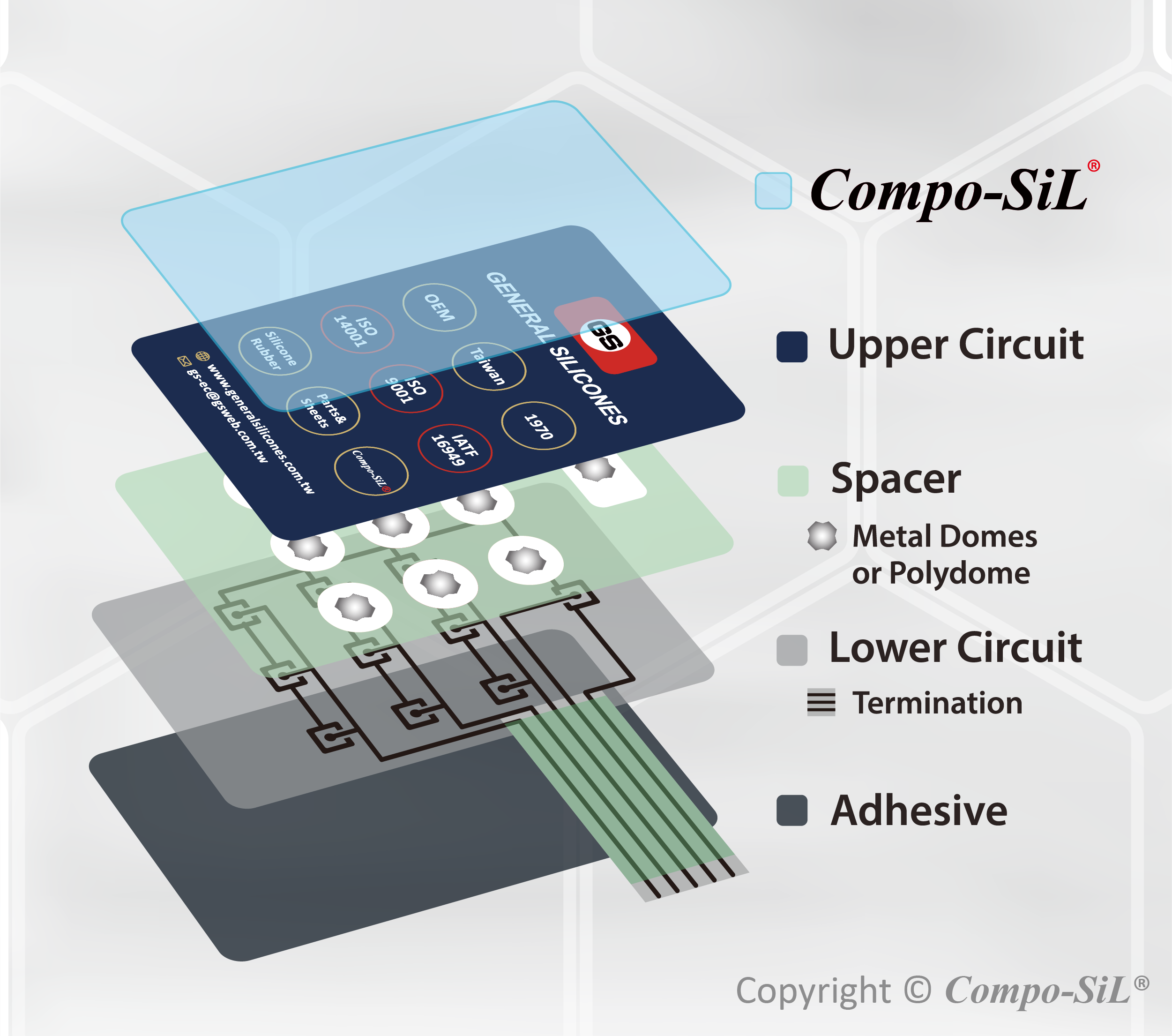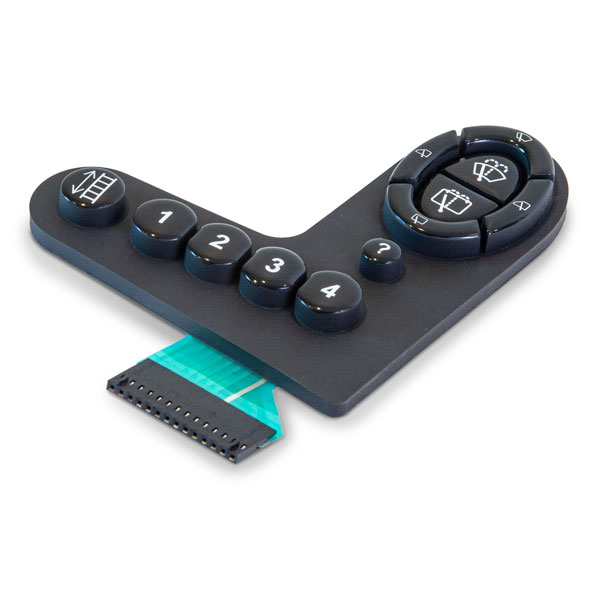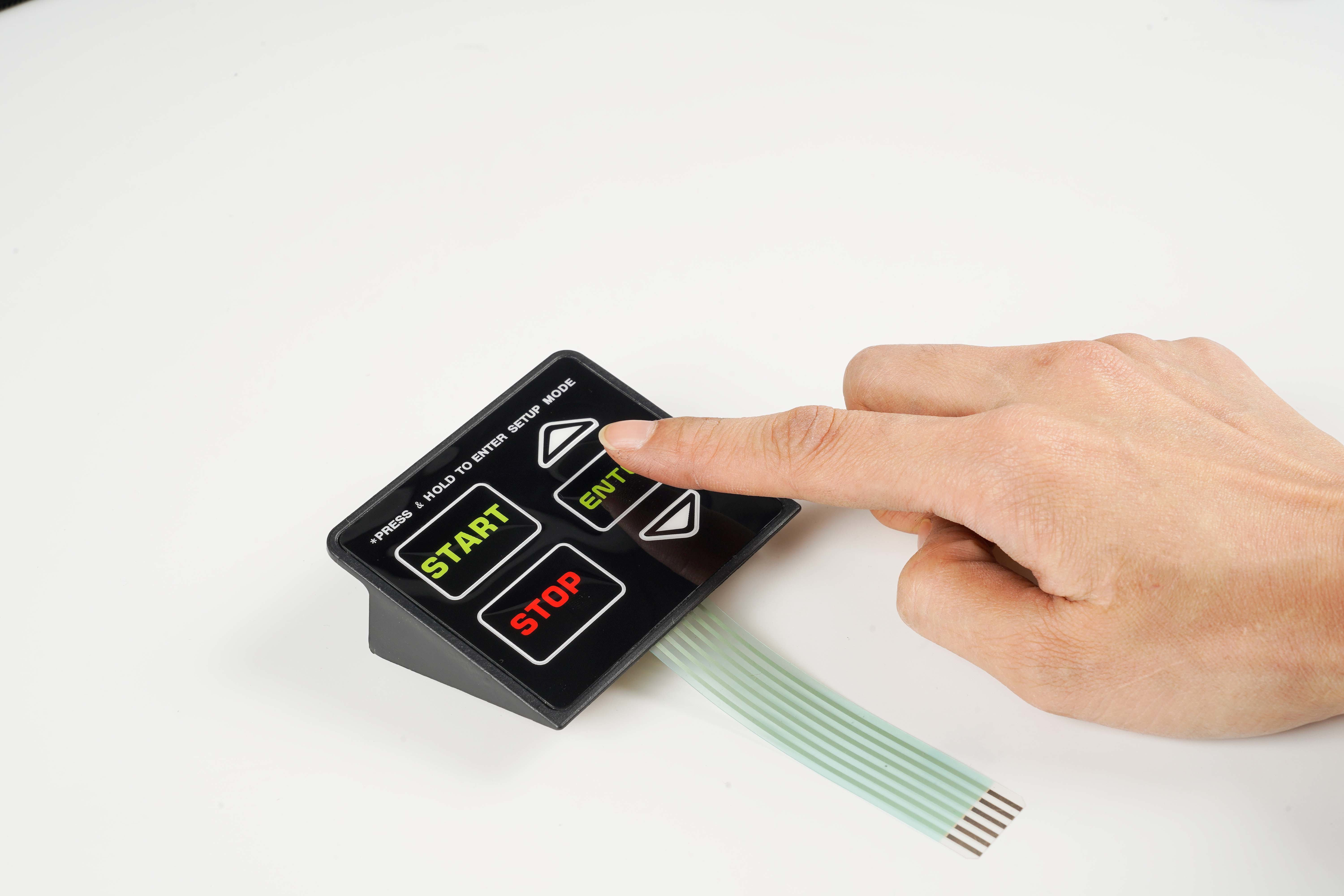The Manufacturing Refine Behind Membrane Change: What You Need to Know
The production process behind membrane layer changes combines mindful style, product choice, and quality assurance. It begins with recognizing the ins and outs of membrane layer button design and progresses through different stages, including product options and printing methods. Each phase plays a necessary duty in guaranteeing performance and longevity. The complexities of layer building and the strenuous testing criteria might reveal insights that are not promptly apparent. What lies beyond these foundational components?
Understanding Membrane Change Layout
Although membrane switches may appear basic initially look, their style includes detailed factors to consider that guarantee functionality and toughness. The design process starts with a complete understanding of customer needs, consisting of the interface's designated application and environmental elements. Comfort designs is a crucial element, as the format should help with convenience of usage while making sure that tactile comments meets user expectations.Moreover, the layering of parts, such as visuals overlays, glue layers, and conductive traces, have to be exactly engineered. membrane switch. This layered arrangement not just affects the switch's responsiveness but likewise affects its durability. Interest is given to the securing methods utilized to protect versus moisture and dirt, which might jeopardize performance. In addition, style considerations reach aesthetics, where color pattern and visual clarity boost user experience. Inevitably, the style of membrane switches equilibriums performance, user experience, and longevity, making sure that they meet the needs of different applications effectively
Products Utilized in Membrane Change Manufacturing
When choosing materials for membrane button manufacturing, it is necessary to ponder both performance and durability. The main products include polyester and polycarbonate movies, which provide adaptability and toughness. These movies are commonly covered with sticky to ensure correct bonding to substrates. Conductive inks, normally made up of silver or carbon, are essential for creating electrical links within the switch, permitting reputable operation.Additionally, a safety layer, such as a hard coat, is regularly related to enhance scrape resistance and long life. The choice of backing material, such as acrylic or foam, can substantially affect the button's tactile feel and total user experience. Numerous environmental elements, consisting of temperature level and moisture, need to guide material selection to guarantee peak performance in particular applications. Eventually, the ideal mix of products adds to the membrane layer button's performance and life expectancy, making informed choices important for producers.
The Printing Process: Creating Graphics and Text
The printing procedure in membrane layer button production plays a substantial duty in generating high-grade graphics and message. Numerous graphic design techniques are employed to assure aesthetic allure and performance, while cautious ink selection approaches are essential for resilience and performance. Recognizing these components is basic for accomplishing finest results in membrane layer button style.
Graphic Style Techniques
Graphic design strategies play a necessary role in the printing procedure of membrane buttons, as they define how graphics and text will ultimately show up on the final item. Efficient graphic layout includes the strategic usage of designs, colors, and font styles to improve readability and aesthetic charm. Developers typically make use of vector graphics for scalability, guaranteeing that photos continue to be sharp at various sizes. In addition, attention to comparison and alignment is important, as it affects user interaction and aesthetic high quality. The unification of branding elements, such as logo designs, have to be handled with like keep brand stability. On the whole, thoughtful graphic style strategies contribute significantly to the performance and good looks of membrane switches, affecting individual experience and item performance.
Ink Option Approaches
Choosing the ideal ink is essential for achieving the preferred aesthetic top quality and durability in membrane switch production. Different ink kinds are made use of, including solvent-based, water-based, and UV-curable inks. Each type uses distinctive features, such as flexibility, adhesion, and resistance to ecological factors. Solvent-based inks are frequently favored for their resilience and lively shades, while water-based inks are a lot more ecologically friendly however may have limitations in adhesion. UV-curable inks offer fast curing and robust efficiency. In addition, shade matching methods guarantee that the selected inks align with style specifications. Ultimately, the selection of ink have to think about elements such as application method, substrate compatibility, and end-use needs to accomplish remarkable lead to membrane button graphics and text.
Layer Construction and Setting Up

Product Selection Process
A careful selection of materials is vital in the production procedure of membrane layer buttons, as it straight affects capability and longevity. The key products made use of consist of polyester, polycarbonate, and various conductive inks. Polyester is typically favored for its outstanding resistance to chemicals and abrasion, making it appropriate for severe atmospheres. Polycarbonate, on the other hand, offers exceptional clarity and impact resistance, which is useful for applications needing exposure and robustness. Conductive inks, typically made up of silver or carbon, are essential for developing trustworthy electric pathways. Additionally, the choice of sticky materials influences the total integrity of the switch - membrane switch. Examining factors such as ecological exposure, responsive feedback, and aesthetic demands guides manufacturers in choosing the finest materials for their details applications
Layer Bond Techniques
Sticking layers in membrane layer switch building and construction is an essential process that assures capability and durability. Various attachment methods are employed to protect optimal bonding in between layers, which normally include the usage of adhesives, warm, and stress. Pressure-sensitive adhesives (PSAs) are frequently utilized for their convenience of application and immediate bonding capacities. Additionally, thermal bonding strategies can be applied, where warmth is used to trigger adhesive homes, securing a strong bond. The selection of bond approach largely depends upon the products involved and the certain application needs of the membrane button. Correct positioning and consistent application of adhesives are necessary to stop defects, safeguarding the switch runs effectively throughout its designated life-span.
Quality Control Steps
Ensuring quality assurance during the layer building and setting up of membrane switches is necessary for maintaining performance and dependability. This procedure commonly involves a number of important procedures, consisting of extensive assessments at each phase of manufacturing. Suppliers utilize advanced testing methods, such as peel tests and bond evaluations, to validate the stability of layer bonds. Furthermore, visual inspections are performed to recognize any type of problems in printing or product disparities. Ecological conditions, such as temperature and humidity, are thoroughly kept an eye on to ensure suitable healing and attachment. Regular calibration of devices assists preserve accurate manufacturing criteria. By applying these top quality control procedures, makers can considerably decrease the threat of item failure, guaranteeing that the last membrane switches fulfill the needed specs and customer assumptions.
Checking and Quality Assurance Actions

Advancements in Membrane Change Technology
As innovations in innovation remain to advance, membrane buttons are profiting from innovative growths that improve their capability and individual experience. One remarkable advancement is the integration of capacitive touch modern technology, which enables even more responsive and instinctive user interfaces. This change not only enhances visual appeals however additionally minimizes mechanical damage, prolonging the life-span of the switches.Additionally, developments in visuals overlay materials have brought about improved longevity and resistance to environmental factors such as dampness and UV light. These materials now use enhanced clearness and illumination, more elevating the aesthetic appeal.Furthermore, the unification of smart innovation is changing membrane changes right into interactive control panels, allowing connection with IoT tools. This connection fosters a seamless individual experience, leading Recommended Site the way for applications in various industries, from medical care to consumer electronics. Collectively, these advancements placement membrane layer switches as vital elements in modern-day tool layout.
Frequently Asked Questions
For how long Does the Membrane Change Production Process Take?
The duration of the membrane switch manufacturing process can vary significantly. Aspects such as complexity, materials used, and production quantity impact timelines, with typical manufacturing varying from a couple of days to numerous weeks for conclusion.
What Are the Usual Applications for Membrane Layer Buttons?
Membrane layer buttons are generally made use of in numerous sectors, consisting of vehicle controls, home home appliances, medical devices, and customer electronic devices (membrane switch). Their versatility and sturdiness make them optimal for applications requiring user-friendly user interfaces and trusted efficiency in varied atmospheres
Can Membrane Switches Over Be Custom-made for Certain Requirements?

What Is the Life-span of a Regular Membrane Layer Switch?
The life expectancy of a typical membrane switch varies, but typically, it ranges from 1 to 5 million cycles. Aspects such as use, atmosphere, and worldly high quality substantially affect longevity and total efficiency in time.

Are Membrane Layer Changes Ecologically Friendly?
The environmental kindness of membrane layer changes varies. Some products made use of may not be recyclable, while others can be environment-friendly. The general impact depends on manufacturing techniques and materials, demanding careful consideration during choice and disposal. The production procedure behind membrane changes combines mindful style, material option, and high quality control. It begins with understanding the details of membrane layer switch layout and progresses with various phases, consisting of material selections and printing techniques. When picking materials for membrane layer switch manufacturing, it is crucial to consider both efficiency and longevity. A mindful selection of products is important in the production process of membrane layer buttons, try this as it directly affects performance and longevity. The option of attachment technique greatly depends on the materials entailed and the particular application needs of the membrane button.